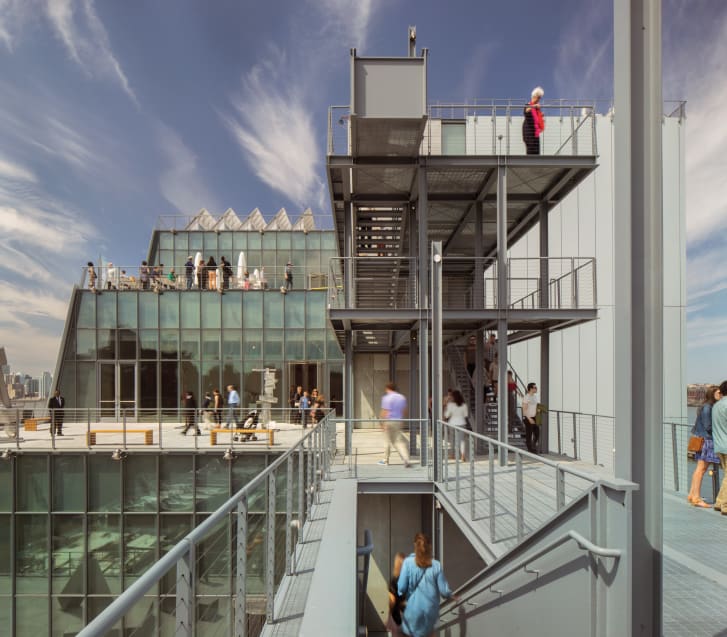 The Whitney Museum of American Art in New York, which opened in 2015,
The Whitney Museum of American Art in New York, which opened in 2015,
is one of many museums Piano has designed.
Credit: Courtesy Nic Lehoux/RPBW
Piano’s father originally acquired the land but never got around to building on it. All the family did with it was harvest its abundant basil to make the regional specialty, pesto. Piano eventually bought the plot from his elder brother and started to build. He moved his workshop there in 1992. It’s now also home to his personal archive and Foundation.
Sou Fujimoto: The visionary blending architecture with nature
For our interview, I follow him down steep steps to an office meeting room. He moves a little gingerly, still recovering from a knee operation. Tall and slim, with a neat white-gray beard and discreet glasses, Piano is dressed casually in a blue linen shirt and white trousers. He looks like he’s just stepped off his yacht. (In fact, a few days later, he will sail down to Sardinia with family and friends.) He settles into a chair and happily starts talking about his « very funny profession. »
 The Jérôme Seydoux Pathé Foundation in Paris,
The Jérôme Seydoux Pathé Foundation in Paris,
completed in 2014,demonstrate’s Piano’s career-long obsession with light and glass.
Credit: Courtesy Michel Denancé/RPBW
Much of what he says, he has said before. But he still speaks eloquently, almost poetically. « You have to start from somewhere. Architecture is about building, about understanding, about using your hands, » he explains.
For Piano, it’s about engineering and technology, « a sense of lightness, » defying gravity. It’s « a mix — ethics, beauty, poetry. » It’s both art and science, both simple and highly complex.
‘There’s always a moment’
In the workshop, the atmosphere seems studious and relaxed, almost academic. The space is light, airy and open-plan. This could be a small seaside university campus and Piano, a genial visiting professor.
He has a team of 10 partners and 25 associates. Shunji Ishida, who is 73 and a workshop fellow, has been with him for 47 years. Piano says that they know each other so well that words are virtually redundant.
Underground design: A journey through the Moscow Metro
Piano’s desk is a large, rectangular wooden table at one end of the office. Computers are « necessary and seductive » for the work — and have been so since Kansai Airport, which was built between 1991 and 94 — but there isn’t one on his desk.
« I don’t work a computer myself, » he explains. « I like to simplify. »
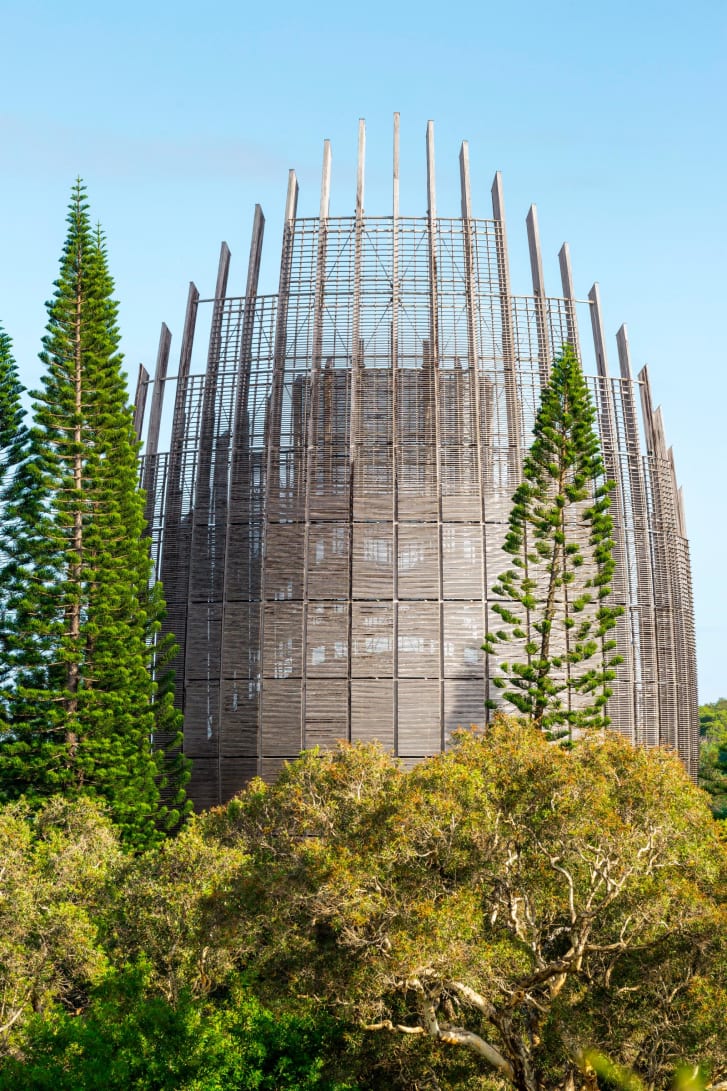 The design for the Jean-Marie Tjibaou Cultural Centre in Noumea, New Caledonia
The design for the Jean-Marie Tjibaou Cultural Centre in Noumea, New Caledonia
was inspired by the houses of th territory’s indigenous chiefs.
Credit: Courtesy Sergio Grazia/ADCK/Jean-Marie Tjibaou Cultural Centre/RPBW
When in Genoa — as he does everywhere — he sketches his ideas with a green felt-tip pen.
Sketches of his current projects hang from metal clamps on a wall by his desk, often on A4 paper. Piano constantly refines, adding and extracting. The sketches travel with him wherever he goes, wherever an idea might pop into his head. For big projects, he has been known to make sketches 20 feet wide.
The Royal Academy will focus on 16 projects, including Pompidou, the Shard, the Whitney Museum of American Art in New York and the extraordinary Jean-Marie Tjibaou Cultural Centre in Noumea, capital of New Caledonia, a French territory in the Pacific. Piano and his wife, Milly, visited the cluster of islands on their honeymoon.
Richard Rogers: ‘When public space is eroded, our democracy suffers’
« You don’t start a job without spending time at the place, » he says.
This is a cardinal rule for Piano. Visiting Entebbe, Uganda, where his team is currently building a children’s hospital, the architect and his colleagues were struck by the beauty of the local red clay. Someone brought a bag of it back to the office. They compressed the clay, added cement and a few chemicals. This compound can now be found in the hospital’s walls.
« There is always a moment, » Piano reflects, « always a moment. » He’d been moved by the plight of refugees flooding over the border into Uganda from South Sudan. « I didn’t cry, » he says, « (but) yes, you are touched. You have to be touched. How else can you have passion in the building? »
When I ask Piano about winning the competition to design the Centre Pompidou in 1971, he is instantly animated by the memory. Piano was then 33; Richard Rogers, 37. I say that photos of him from the time, big-bearded and dark-haired, make him look like he’s just come off the barricades. He laughs.
« We were wild, young bad boys back then, » he says.
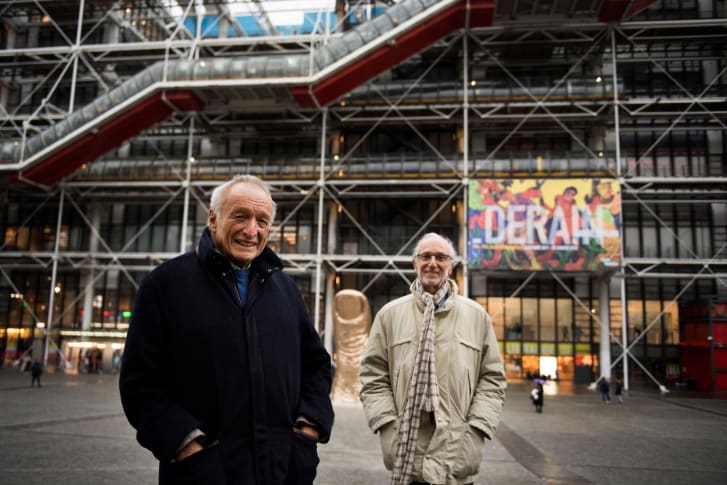 Richard Rogers (left) and Renzo Piano pose in front of the Pompidou Center in 2017.
Richard Rogers (left) and Renzo Piano pose in front of the Pompidou Center in 2017.
Credit: MARTIN BUREAU/AFP/AFP/Getty Images
In 1971, Piano & Rogers was a studio of just five people. The two collaborators, both teachers at London’s Architectural Association, only worked on their Pompidou submission for a month. Piano remembers the exact number of entries that the competition received: 681. He also clearly remembers receiving the phone call in Genoa, telling him they’d won. He was so stunned that he didn’t quite believe it, asking the man to repeat what he’d said. Piano then promptly rang Rogers in London, telling him to sit down before imparting the news.
US architects rebuke Trumpism at the Venice Biennale
« The Beauborg is a ship, a flying vessel, » he says, referring to the complex by its local name. With his Paris office nearby, Piano remains a regular visitor to its exhibitions.
Another early building to feature in the Royal Academy show is the Menil Art Museum (1987) in Houston, Texas. Ishida says it was the first project for which they made a full-scale model of a section of a building — a gallery space measuring 20 feet by 40. The use of full-scale mock-ups has been a workshop practice ever since.
Eying the future
Piano believes that architecture is a very important job. « You are not just a builder, you are also a civic person, so you make a shelter for human beings and human communities, » he said in
a 2017 interview with the Louisiana Museum of Modern Art. « And this becomes even more interesting, because then you make buildings that are for people to stay together and to share values, which is the beginning of maybe making a better world. »
« The problem with Renzo is he doesn’t stop, » remarks his personal assistant, Francesca Bianchi. « Sometimes I think he’s bionic. » As proof of this spirit, after
a bridge in Genoa collapsed two months after our interview, killing 43, Piano, who was in town during the tragedy,
offered to help design a new bridge and has already shown some of his ideas to local officials.
A small community of 3D-printed concrete houses is coming to the Netherlands
Piano evidently intends to continue till he drops. Bianchi says he has told her, « When I rest, it will be eternal. »
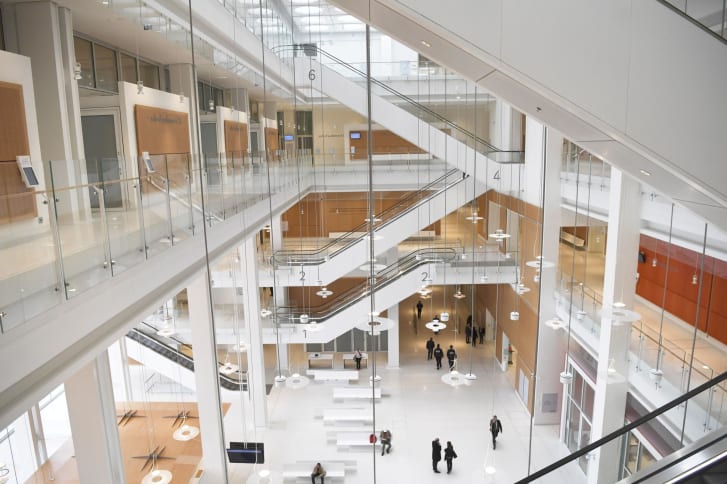 Piano’s courthouse in Paris’ Batignolles neighbourhood opened in April 2018.
Piano’s courthouse in Paris’ Batignolles neighbourhood opened in April 2018.
Credit: ALAIN JOCARD/AFP/AFP/Getty Images
On the day of our visit, Bianchi sits nearby, keeping a close, protective eye on Piano, making sure the other journalists and I don’t wear him out with our questions.
The day of our visit, Piano seems a little tired, but he is charming all the same. The names of old friends regularly crop up in conversation: the late composer
Pierre Boulez, pianist
Daniel Barenboim, architects
Richard Meier and
Frank Gehry. He still speaks to
Richard Rogers — « my brother » — on the phone every two or three days. The film director
Joel Coen and his wife, actress
Frances McDormand, will visit the workshop a few days after we leave.
Just before we break for lunch, I ask Piano: Does he take afternoon naps, like 89-year-old Gehry does? He replies with an amused shake of the head. He is sorry to disappoint.
He smiles again. « I never stop, » he says, matter-of-factly. « No reason to stop. I would feel guilty about doing nothing. I can’t do anything else. This is the only thing I know. »
« Renzo Piano: The Art of Making Buildings » is on at the Royal Academy of Arts in London from Sept. 15, 2018 to Jan. 20, 2019.


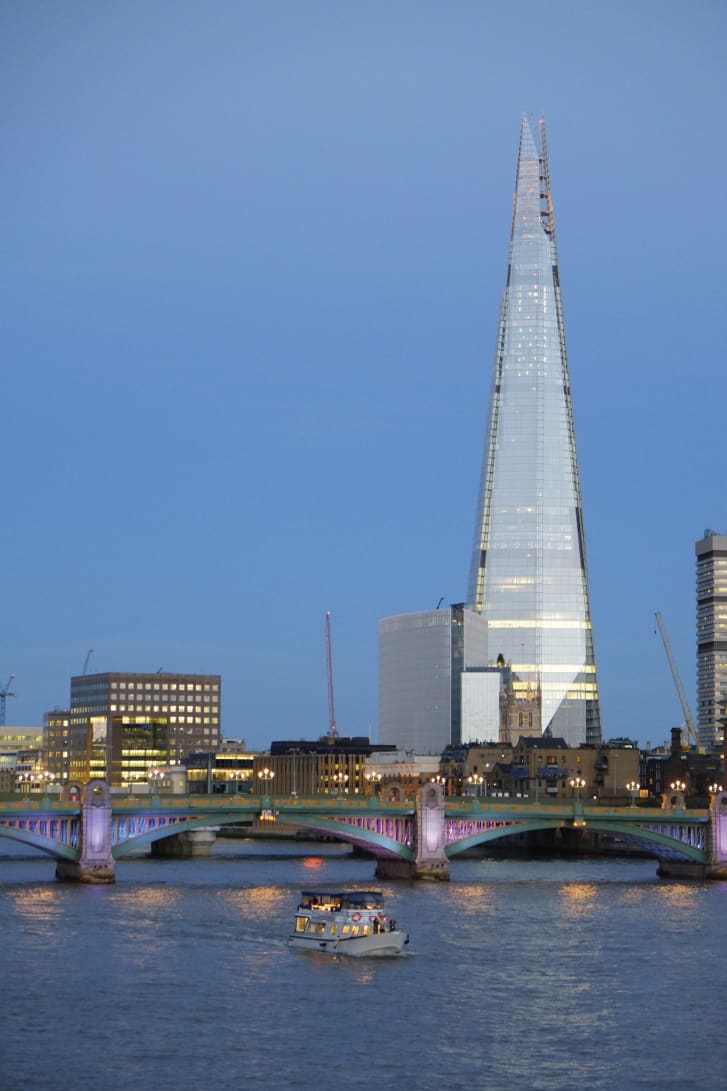 Since Renzo Piano Building Workshop completed The Shard in 2012,
Since Renzo Piano Building Workshop completed The Shard in 2012, The Whitney Museum of American Art in New York, which opened in 2015,
The Whitney Museum of American Art in New York, which opened in 2015, The Jérôme Seydoux Pathé Foundation in Paris,
The Jérôme Seydoux Pathé Foundation in Paris, The design for the Jean-Marie Tjibaou Cultural Centre in Noumea, New Caledonia
The design for the Jean-Marie Tjibaou Cultural Centre in Noumea, New Caledonia Richard Rogers (left) and Renzo Piano pose in front of the Pompidou Center in 2017.
Richard Rogers (left) and Renzo Piano pose in front of the Pompidou Center in 2017. Piano’s courthouse in Paris’ Batignolles neighbourhood opened in April 2018.
Piano’s courthouse in Paris’ Batignolles neighbourhood opened in April 2018.